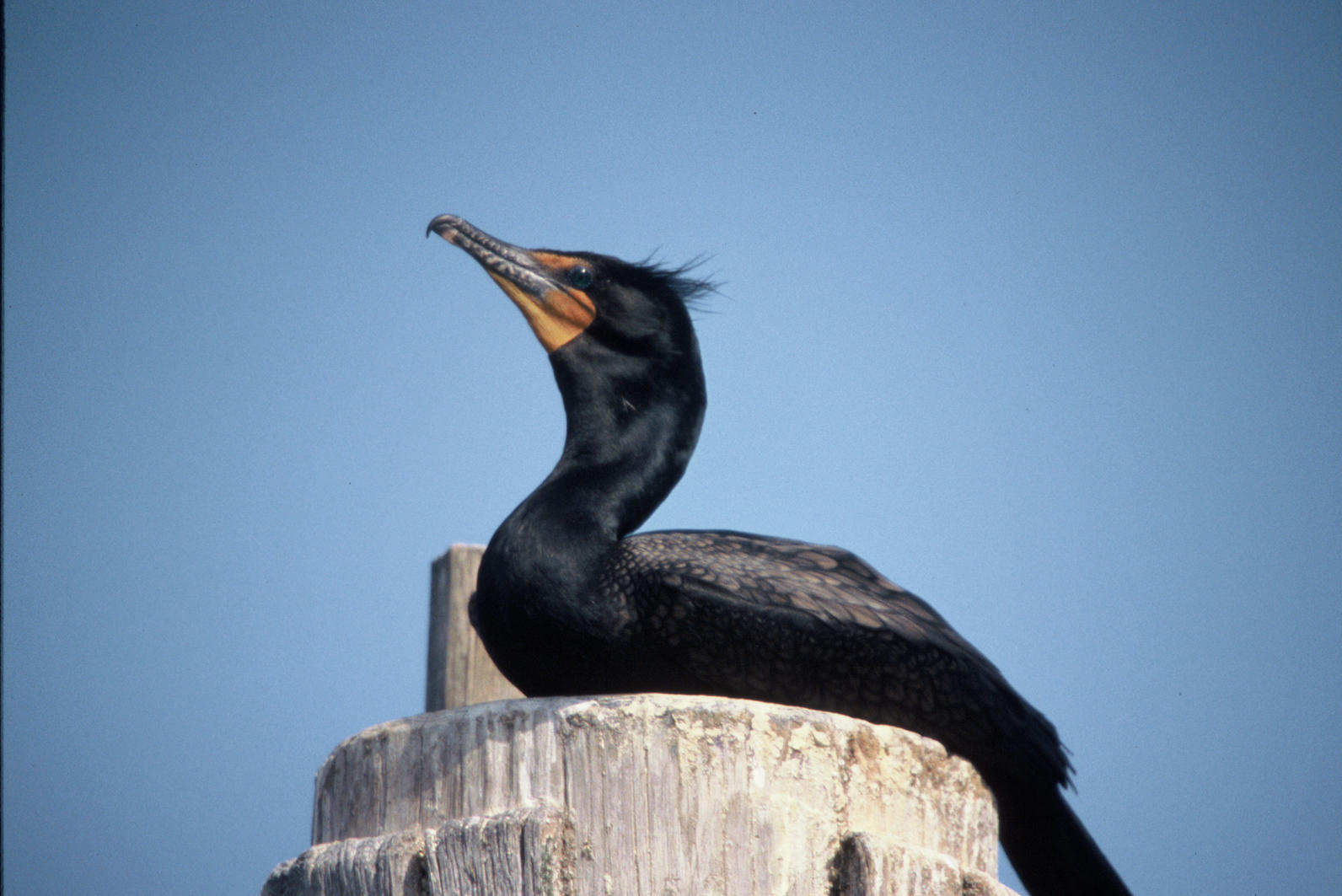Sustaining the Salton Sea is critical for millions of migratory birds and the health of 650,000 regional residents.
Frank Ruiz, Director of Salton Sea Programs with Audubon California, looks out at the Salton Sea
The Salton Sea is one of the most important places for birds in North America, but is at risk of losing its ecological value. As the Sea changes, we face unclear impacts on a vital part of the Pacific Flyway and the growing possibility of a toxic dust bowl that will threaten public health for more than a million Californians.
As part of the Colorado River Delta, the sea filled and dried for thousands of years prior to its current, 35-mile-long incarnation, which came into existence as the result of a massive flood of the Colorado River in 1905. The 330-square-mile Sea has partially replaced wetland habitat lost to agricultural and urban conversion in the Colorado River Delta, California’s coast, and the San Joaquin Valley.
The Sea is a globally significant Important Bird Area (IBA). For the past century, the Sea has served as a major nesting, wintering, and stopover site for millions of birds of approximately 400 species. Until recent years, tiny Eared Grebes wintered by the thousands in rafts far out on its surface. American White Pelicans roosted on mudflats and fished for tilapia in its shallows. Migratory shorebirds stopped to migrate and feed along the Sea’s edge. Today’s avifauna is shifting – the Sea is losing the fish-eating birds such as pelicans and cormorants because fish populations are disappearing. Eared Grebes, who have fed on pile worms, are also declining rapidly, from millions to several thousand. Shorebirds, however, that feast on invertebrates along the shore edges, as well as shallow feeding ducks such as Northern Shoveler and Ruddy Duck, are still wintering at, or passing along the Sea, in massive numbers.
Recently, its water level dropped to the point that colonial seabirds began abandoning nesting sites en masse in 2013, and shallow, marshy habitat areas at the sea’s edge have begun to rapidly vanish, particularly at the south end. In 2017, inputs of Colorado River water were transferred from local agricultural uses to urban uses on the coast. As less water flowed into the Sea, it shrunk considerably, becoming more saline and inhospitable to birds, fish, and insects.
We must take immediate action at the Salton Sea to protect human health and establish viable habitat for millions of migratory birds.
Conservation investments at the Salton Sea must embrace a holistic approach, considering the well-being of all waterbirds, including shorebirds.
Conducting community science during a glorious spring migration for the Intermountain West Shorebird Survey
Our latest study shows how biofilm may be providing the biofuel that migratory shorebirds need
Discover the data and resources about the habitats and changes happening at the Salton Sea from across the network.
Cómo un humedal emergente en la Laguna Salton Sea ofrece nuevas esperanzas para las aves migratorias y las comunidades locales.
Audubon California has begun the planning phase for the restoration and enhancement of the newly emerging Bombay Beach Wetland, located by the town of Bombay Beach at the Salton Sea.
Our new, downloadable pocket field guide features some birds of the Coachella Valley that are culturally significant to the Cahuilla people of the Torres-Martinez Band.
Estamos estrenando nuestra nueva, descargable guía de campo de algunas aves del Valle de Coachella, las cuales son culturalmente importante para los Cahuilla.
More than 400 species of birds come to the Salton Sea in California.

In the latest news in the ongoing battle of a federal government plan to kill thousands of Double-crested Cormorants in Oregon, a judge last week ruled that the Army Corps of Engineers violated the law when it refused to consider other ways to help endangered salmon. The judge, however, allowed the killing to continue. The Audubon Society of Portland has been leading the legal battle. This issue has been particularly compelling for us at Audubon California given the collapse of a major breeding colony at the Salton Sea.
The Los Angeles Times's Patt Morrison interviews Tim Krantz, a University of Redlands environmental studies professor, about what's at stake at the Salton Sea. An excerpt:
"If you had a 30-second TV spot to make your pitch for saving the Salton Sea, what would it say?
The sea is not an accident. It's not there in the isolated desert. It affects 1.5 million people who live around it. It's not a local, regional problem; it's much broader. To deal with it retroactively, only after thousands of people have lost their lives, only after property values from Palm Springs to the border have declined, only after the fish and wildlife values, the migratory bird values have been lost — we're facing the dilemma in perpetuity, trying to put Band-Aids on the problem. Or we can spend that money now and maybe get a return on our investment in short order."
Read the whole piece here.
Our newsletter is fun way to get our latest stories and important conservation updates from across the state.
Help secure the future for birds at risk from climate change, habitat loss and other threats. Your support will power our science, education, advocacy and on-the-ground conservation efforts.
Join the thousands of Californians that support the proposed Chuckwalla National Monument.